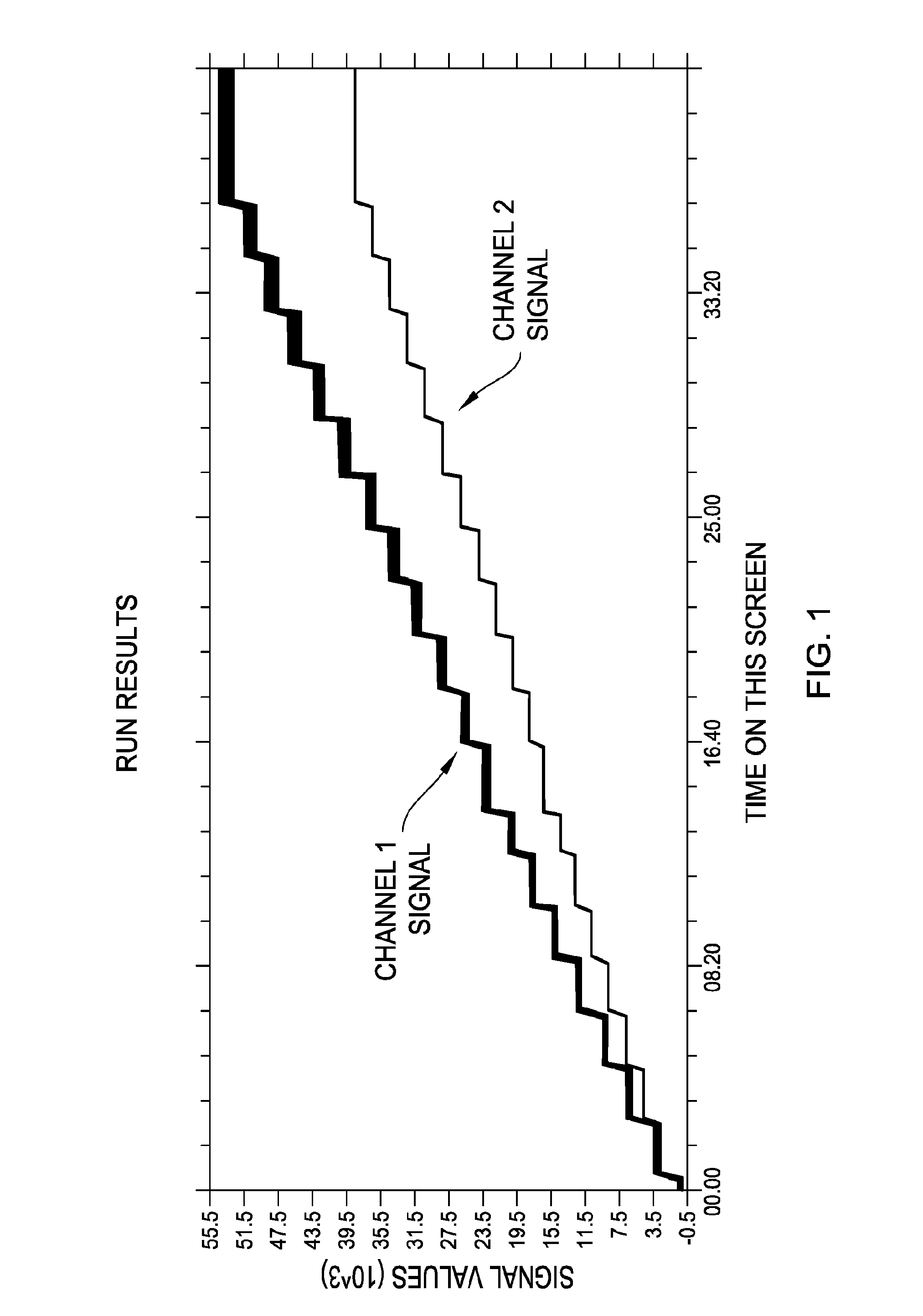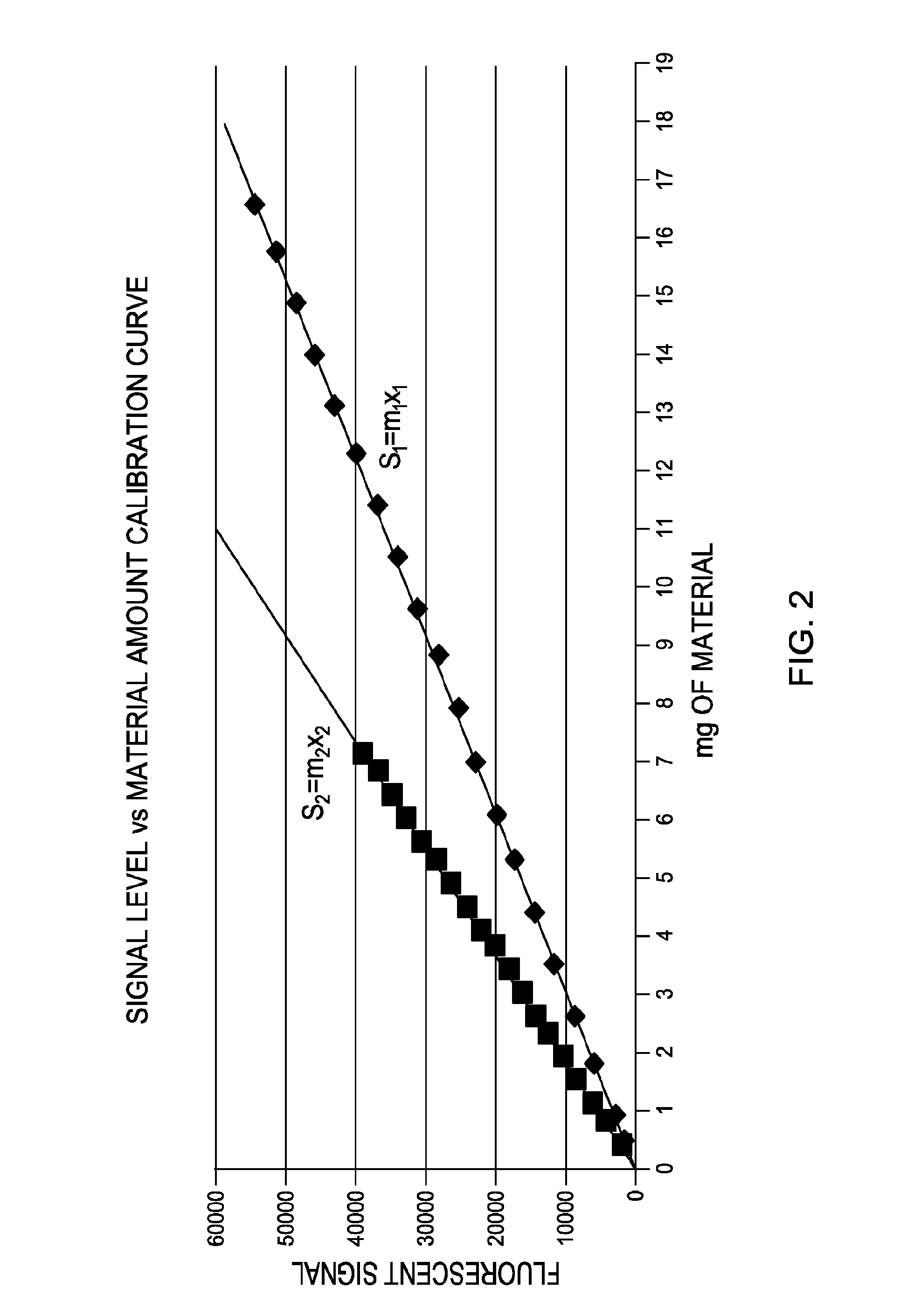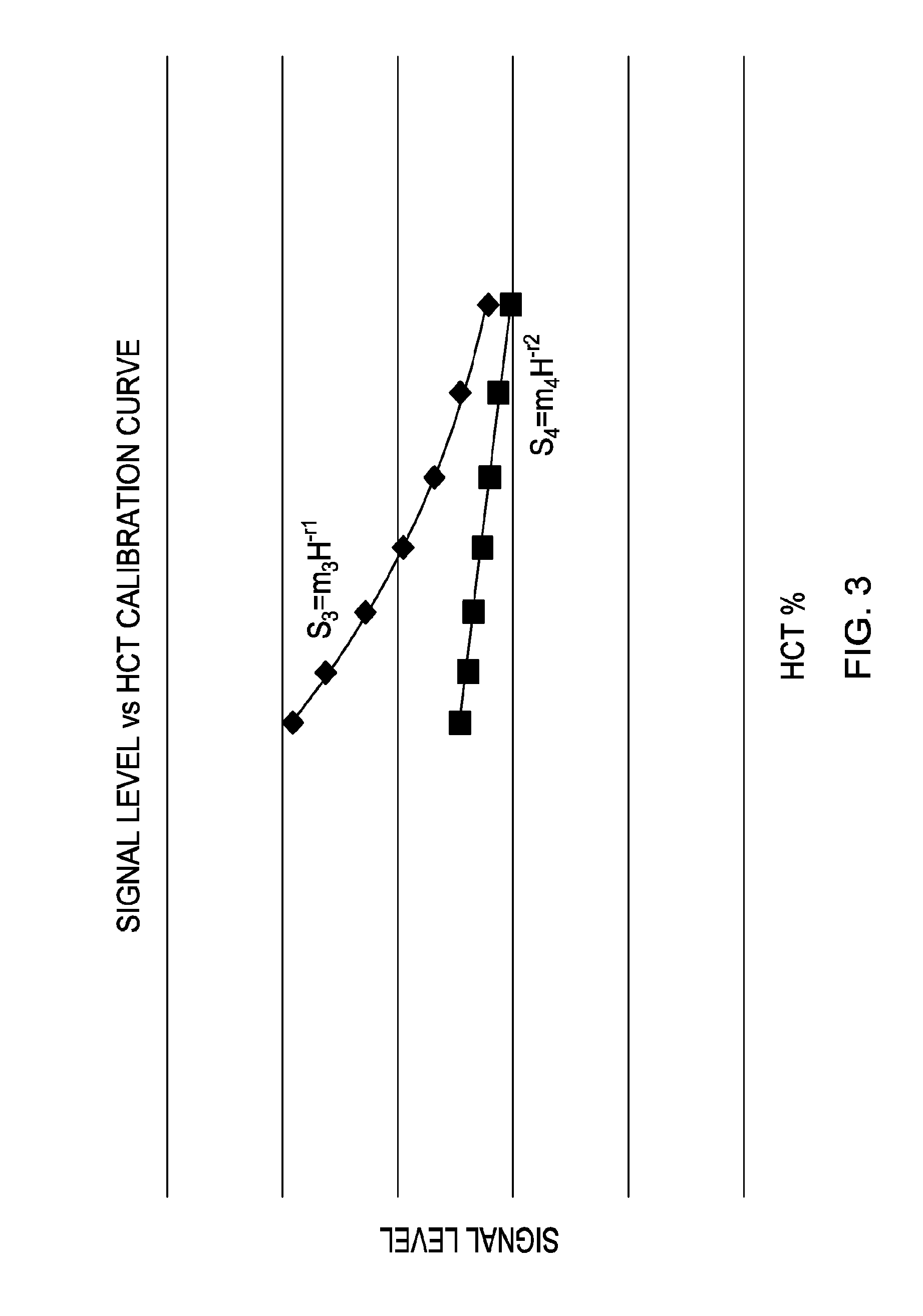Compositions and methods for monitoring biometric indicators
a biometric indicator and composition technology, applied in the field of compositions and methods for collecting biometric information, can solve the problems of reducing the survival chance of patients, affecting the accuracy of patient diagnosis, and deteriorating patient condition faster than indicators can be assessed, so as to reduce the permeability of the blood vessel wall, and reduce the effect of molecular mass
- Summary
- Abstract
- Description
- Claims
- Application Information
AI Technical Summary
Benefits of technology
Problems solved by technology
Method used
Image
Examples
example 1
Generation of Calibration Curves
[0073]1. A step dose blood test set is run on a whole blood sample containing two fluorescent markers each having its distinct emission wavelength. An example of the results is shown in FIG. 1 with the upper curve representing the first emission signals from the first fluorescent marker or tag recorded in Channel 1 as the Channel 1 signal, and the second emission signals from the second fluorescent marker or tag recorded in Channel 2 as the Channel 2 signal. As discussed previously, this step dose blood test set can also be generated using one static marker having two fluorescent tags each tag having its distinct emission wavelength. Each fluorescent marker or each fluorescent tag may be referred to as a “fluorescent component” hereafter.
[0074]2. The average signal level of the “flat” or stable portion at each dose step for each fluorescent component is calculated.
[0075]3. Based on the known volume of blood (Vt) used, the known dose of VFI (VD) and th...
example 2
Generation of a Species Specific Hematocrit (HCT) Calibration Curve
[0077]1. A blood test is run with the single dose approach. With a known volume of blood (Vt) and a known HCT of the blood (Hcalib), the volume of saline (VS) needed for the test is calculated.
Vt−VtHcalib=VS (4)
[0078]2. The blood and the saline are equivalently dosed from the same VFI vial.
[0079]3. A predetermined volume of blood is removed from the test set and discarded. The same volume of dosed saline, as the blood previously removed, is injected back into the test set. This exchange will maintain the concentration of each component as well as the total volume of the test set, but alter the volume of distribution to HCT ratio. This step is repeated numerous times to generate multiple data points at which the volume of distribution and HCT ratio are different.
[0080]4. Each new point is allowed to stabilize before a new point is generated. A new HCT is calculated at each stable point.
(Vt-Ve)(H0)Vt=H′(5)
Where Vt is ...
example 3
Determining Various Biometric Indicators
[0085]When a test is run on a subject, the “batch” of VFI must be known because the signal calibration and HCT calibration curves used for interpretation must be based on the same “batch” of VFI given to the subject.
[0086]1. From a test data sample of FIG. 5, the raw ratio at T0 (RT0) and the average stable Component 2 (FD003) signal level (Savg) are extracted. The lower curve in FIG. 5 represents Channel 1 signals, and the upper curve represents Channel 2 signals.
[0087]2. Using the raw ratio at T0 (RT0), the apparent HCT of the subject is calculated from the Ratio vs HCT Calibration Curve.
RT0=KH−q (10)
H=Happ (11)
[0088]3. Using the calculated apparent HCT and the Signal Level vs. Material Amount Calibration Curve; the amount of correction, C, is calculated and applied to the average signal level component.
[0089]From Equation 7:
Scalib=m4Hcalib−r (12)
Sapp=m4Happ−r (13)
If Happcalib then Scalib / Sapp
If Happ>Hcalib then Sapp / Scalib
Scalib / Sapp=...
PUM
 Login to View More
Login to View More Abstract
Description
Claims
Application Information
 Login to View More
Login to View More - R&D
- Intellectual Property
- Life Sciences
- Materials
- Tech Scout
- Unparalleled Data Quality
- Higher Quality Content
- 60% Fewer Hallucinations
Browse by: Latest US Patents, China's latest patents, Technical Efficacy Thesaurus, Application Domain, Technology Topic, Popular Technical Reports.
© 2025 PatSnap. All rights reserved.Legal|Privacy policy|Modern Slavery Act Transparency Statement|Sitemap|About US| Contact US: help@patsnap.com



